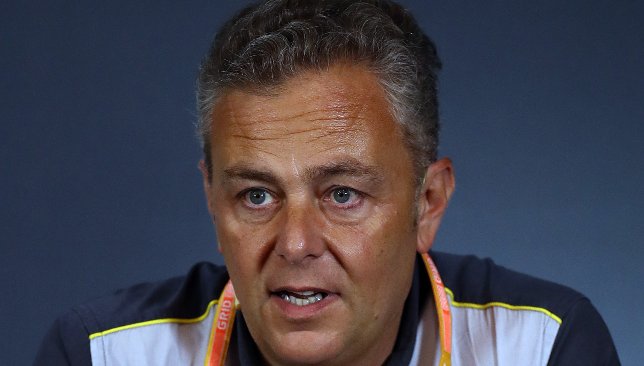
After the track record was lowered at Yas Marina Circuit for the first time since 2009 earlier this month, Head of Pirelli Motorsport in Formula 1 and car racing Mario Isola would have been proud with the consistency and durability of the tyres during the Abu Dhabi GP.
Six-time world champion Lewis Hamilton secured a rare Grand Slam as such, clinching pole position, setting the fastest lap during the race and leading all 55 laps of the Grand Prix.
The Briton lowered the track record previously set by Sebastian Vettel ten years ago in the UAE capital, breaking it by almost a full season with a stunning time of 1:39.283.
As the sole supplier to Formula One, Pirelli are constantly increasing the performance of their tyres as the cars become more sophisticated and advanced.
Pirelli offers F1 teams three compounds: soft, medium and hard, with each presenting a difference in grip and durability in race strategies.
Soft offers greater performance but wear away faster and require more pit stops, hard tyres have less traction but last longer, and medium offers a mix of both.
Earlier this month, we spoke with Isola about post-season tyre testing, tyre fairness and what the next step is for 2020 tyres.
Q. One thing that has always interested me is how Pirelli ensure there is fairness with all the teams? An example would be how each team gets the same tyres and there is no preferential treatment
A. We’ve a solid system. It is clear when you are the sole supplier that the priority is to ensure that we respect the sporting regulations, to supply the same product to everyone and this is feasible thanks to a system with the FIA, where they send us the barcodes. We are not producing the barcodes ourselves. We receive them from the FIA and from their supplier.
When we prepare the tyres for an event, we put on the barcode on the sidewall before the curing process.
After the tyre is ready and finished, you cannot take out the barcodes. It is impossible. When we have the 1,800 barcodes for the event, we send it to the FIA.
The FIA has software that has random allocation for each car. We then associate each tyre with each different car. This is a system that guarantees that we cannot make a special tyre for anybody.
The second part is the service. We have one engineer allocated to every team. We have a strict process to follow and the way in which the engineers prepare the report and give information. It’s the same for all engineers, to ensure we don’t give any advantage to any team. All the engineers are aware of it and know what to do. We have a bespoke software to do it.
With this software they cannot access the data of another team. They only have authorisation to the data of the team where they are located. There are only a few people in Pirelli who have access to all the teams data and they are mainly based in Milan, because they need to analyse all the data. Trackside engineers don’t have this option.
How did post-season testing go and were you happy with how the tyres performed?
We have to analyse lots and lots of data because each team ran more than 100 laps per day. It means we have a good test representative. We have consistent conditions in Abu Dhabi that is important.
We are not giving teams a grand plan. They are free to do what they want. We sent them some indication as to what we expect from testing. The different comparisons we would like to do and so on. They have different plans and are testing for different stuff.
The new construction is designed to work at lower pressure so we gave different prescription for 2019 and 2020 tyre. They are also testing the tyres at different pressures so as to understand which is better.
The target is not to have a tyre that is faster, or with higher grip, but one that has more consistency, less overheating and wider working range of compounds. I am sure we will have good, quality feedback from the teams.
What was the feedback from the engineers of the various teams?
It is mixed feedback. Some teams have found an improvement in some characteristics of the tyre or some compounds. But not an improvement on some of our characteristics or, in some cases, the new tyres are not working at the expected level. That’s why it will not be easy to understand the real performance.
The current cars are very sophisticated. Every time you change a little, the tyres are an important part of the car. The feeling and reaction is huge.
We need to sit down, look at the data, cross the data with the drivers’ feedback. That is an important part of the job as we need to find out what is the best solution for the sport.
What happens next?
For the moment, the FIA has green lighted the 2020 tyres, so this is the product for next year, unless, after testing, there is a decision taken by 70 percent of the teams to stay on the 2019 tyres instead.
In that case, next season’s tyre will be the 2019 tyres. We are not concerned because the 2019 product is very good. We had an exciting season with a lot of good action and good racing.
I’m not worried about staying on the 2019 tyres. In that case, what is important for Pirelli is to understand why we had a different result during our tyre element test compared to the final test. It is important we improve our process and system for the future.